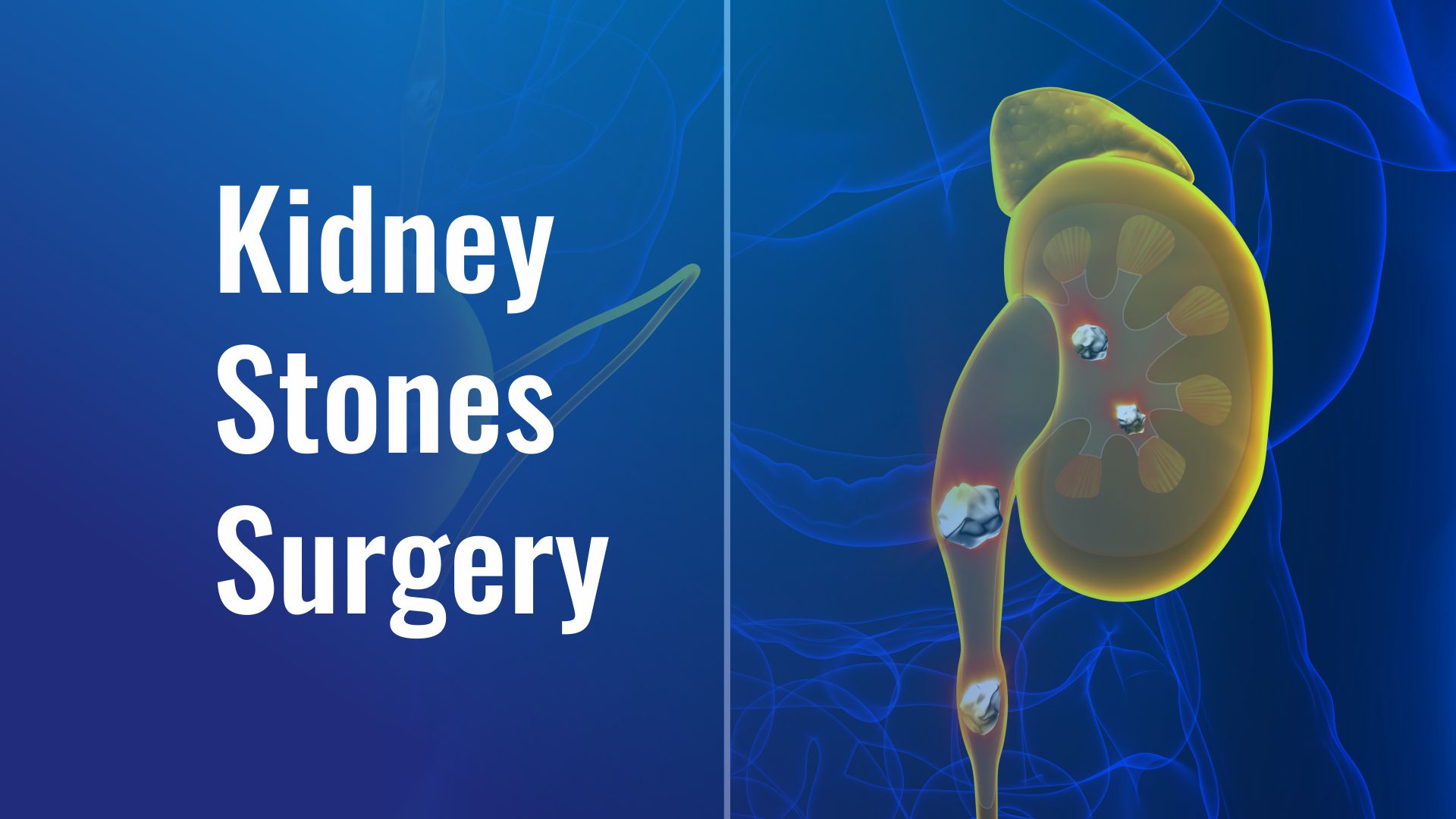Kidney stone surgery, also known as surgical management for kidney stones, is usually recommended when stones cannot pass through the urinary tract on their own or cause significant complications such as pain, infections, or blockages. There are several surgical options available based on the size, location, and type of stone, as well as the patient’s health. Below are the common types of kidney stone surgeries:
Extracorporeal Shock Wave Lithotripsy (ESWL)
Procedure: This is the least invasive surgery. It uses high-energy shock waves to break kidney stones into small pieces, allowing them to pass through normal urinary passage along with urine.
Best for: Smaller & softer stones having HU less than 1000 & generally less than 2 cm in size.
Recovery: Minimal; patients can often go home the same day.
Ureteroscopy
Procedure: A small diameter ( Approx. 2 to 3 mm ) semirigid ureteroscope is inserted through the urethra and bladder to reach the stone in usually in the lower ureter . The stone can be either removed intact or broken into smaller pieces using a holmium laser.
Recovery: Usually outpatient or day care procedure; recovery is quick, though there may be minor discomfort.
Percutaneous Nephrolithotomy (PCNL)
Procedure: This is a more invasive option usually used for larger stones. A small incision is made in the back to insert a nephroscope directly into the kidney, and the stone is broken up and fragments removed.
Requires a hospital stay of 1–2 days. Recovery time is longer compared to ESWL or ureteroscopy.
Laparoscopic or Open Surgery
Procedure: Rarely used, this involves making a larger incision to remove the stone. Open surgery is typically reserved for complex cases where other methods fail or cannot be performed.
Best for : Very large stones or abnormal anatomy.
Recovery: This has the longest recovery time, as it involves a significant incision and a hospital stay of several days.
Indications for Surgery
- Stones too large to pass on their own
- Stones causing infection, blockage, or significant pain
- Stones that haven’t passed after some time with conservative treatments
- Kidney damage or risk of sepsis due to obstruction
FAQs for Kidney Stone Surgery
1. When is kidney stone surgery recommended?
Kidney stone surgery is recommended when stones cannot pass naturally, cause pain, infections, blockages, or other complications.
2. What is Extracorporeal Shock Wave Lithotripsy (ESWL)?
ESWL uses high-energy shock waves to break kidney stones into small pieces, allowing them to pass through the normal urinary tract.
3. Who is ESWL best suited for?
ESWL is ideal for less than 2 cm & softer stones with a Hounsfield Unit (HU) less than 1000.
4. What is the recovery time after ESWL?
ESWL has minimal recovery time, and most patients can go home the same day.
5. What is ureteroscopy?
Ureteroscopy involves inserting a small ureteroscope through the normal urinary passage usually up to lower ureter allowing the stone to be removed intact or in pieces usually from the lower ureter.
6. How long is the recovery after ureteroscopy?
Recovery from ureteroscopy is quick, and it is usually an outpatient or day-care procedure.
7. What is Percutaneous Nephrolithotomy (PCNL)?
PCNL is a more invasive surgery for larger stones, requiring a small incision in the back to remove the stone intact or in pieces from the kidney.
8. When is open or laparoscopic surgery necessary for kidney stones?
Open or laparoscopic surgery is reserved for very large stones, abnormal anatomy, or when other treatments fail, requiring a longer recovery time.


Leave a Reply